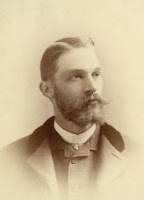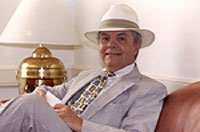The past month, as well as this upcoming month, I have been busy with many community events.
I will be the featured speaker at Hudson Rotary on Wednesday, Nov. 2, 2016.
The HCTV network featured two of my programs the week of Oct. 23, 2016. One was WRA's Brick Row Tour and the other was Women's Education in Hudson, taped at Ellsworth Hall in Sept.
Additionally, I served as the master of ceremonies on Oct. 29, 2016, for the celebration of Cuyahoga Fall's Oakwood Cemetery's Civil War monument and men who served from the "Village of Cuyahoga Falls" during the Civil War. Visit this page to read more about this celebration.
Monday, October 31, 2016
Saturday, September 17, 2016
School Reopened in September 1916
 |
| The Carroll Cutler House from the 1916 Catalog. It was then used as a dormitory. |
 |
| Harlan N. Wood at his desk in Seymour Hall. Faculty member, 1893-1903; 1916-1945 |
 |
| The Nutting House on Hudson Street from the 1916 Catalog. It would be the school dining hall until 1922. |
 |
| Morley Cottage on Hudson Street from the 1916 Catalog. It was a faculty residence. |
Tuesday, August 30, 2016
Louis Bromfield, The Chamay Brothers and WRA
 |
| Patric Chamay '56, senior photo |
Sometime around 2008, Bob Carabell of the Class of 1956
asked what had become of Patric Chamay ’56 and whether he had a connection with
Louis Bromfield.That sent me to the
files to learn more about the two Chamay brothers, both of whom attended WRA in
the 1950’s. I learned that they were indeed sent here by their guardian,
notable Ohio author and conservationist, Louis Bromfield (1896-1956). It seemed that it would make a good story for
our WRA Magazine or a blog post, but instead we are making a short documentary that
should appear on Hudson Community Television (HCTV) sometime this fall.
 |
| Inside the big House in Louis Bromfield's library. To the left of the desk is the framed certificate that he received in 1925 for winning the Pulitzer Prize for his novel Early Autumn. |
This summer we went down to Malabar Farm State Park in
Richland County where the Chamay brothers grew up, and the place they called
home, until the untimely death of Louis Bromfield early in 1956. Patric, who was supposed to graduate that
June, was denied a place at graduation because of a discipline problem. He may have been under some stress caused by
the death of his guardian. In any case, he went to on to attend Carnegie Tech, then pursued a career as a mountaineer, dying in 1968
while trying to scale Mount Rainier. The
other brother, Anthony, who never graduated from WRA, is probably still
alive. Ellen Bromfield Geld, the last
surviving daughter of Louis Bromfield, has a section on the Chamay brothers and
their socialite mother in her book, The Heritage. We hope to interview her this fall.
 |
| Nick Zlantanovich of Hudson Community Television taping my commentary atop Mount Jeez, the popular overlook of Malabar Farm (seen behind me). |
We did extensive video taping at Malabar Farm in July, both
outside and inside the Big House that Bromfield built in 1939. We have contacted researchers at the Malabar
Farm Foundation who have made some rare photos available to us and are
interested in the Hudson Cable production. We also taped at “The Mount”, the home of novelist Edith Wharton, who
corresponded with Bromfield during the 1930’s when both had elaborate gardens
at their respective chateaus in France.
 |
| In Edith Wharton's formal garden at "The Mount" in Lenox, MA, where I taped video in mid-July |
It is hoped that this program, which will run about 30 or 40
minutes, will be on Hudson Community Television (HCTV) late this fall. We plan to do another taping at Malabar Farm
in late September to get some autumn color, and perhaps meet Ellen Bromfield
Geld, who is coming from her home in Brazil for a program there. This is a story that has waited some 60 years
to be told, and we hope to do it justice.
Monday, August 29, 2016
Join Me for a Guided Walking Tour on Sept. 8
The Hudson Heritage Association has asked me to serve as their first presenter for their fall programming series. I will conduct a guided walking tour of Markillie Cemetery, beginning at 7 p.m. on Sept. 8. The tour will begin at the chapel in Markillie Cemetery.
Located on Route 91 north of downtown Hudson, Markillie is one of five cemeteries owned by the city of Hudson. It was established as a cemetery in 1855 by John Markillie, who immigrated to Hudson from England. Upon his death in 1869, the cemetery was bequeathed to the Village of Hudson. It has been expanded several since its beginning and now is the city’s largest cemetery. It is adjacent to St. Mary’s Cemetery and is the final resting place for many of Hudson’s most notable residents.

I will begin with a history of the restored chapel on the cemetery's grounds, followed by talking about the Markillie family and others whose graves will be seen during the walking tour. I will lead this tour through the oldest section of the grounds. Refreshments will be served in the chapel on the cemetery following the tour. For additional information visit the Hudson Heritage Association.
Located on Route 91 north of downtown Hudson, Markillie is one of five cemeteries owned by the city of Hudson. It was established as a cemetery in 1855 by John Markillie, who immigrated to Hudson from England. Upon his death in 1869, the cemetery was bequeathed to the Village of Hudson. It has been expanded several since its beginning and now is the city’s largest cemetery. It is adjacent to St. Mary’s Cemetery and is the final resting place for many of Hudson’s most notable residents.

I will begin with a history of the restored chapel on the cemetery's grounds, followed by talking about the Markillie family and others whose graves will be seen during the walking tour. I will lead this tour through the oldest section of the grounds. Refreshments will be served in the chapel on the cemetery following the tour. For additional information visit the Hudson Heritage Association.
Monday, April 18, 2016
The Long Shadow of John Brown
 |
| Abolitionist leader John Brown (1800-1859) |
WRA connections:
- Owen Brown, father of the abolitionist, was a founding trustee of the college and school in 1826.
- Samuel L. Adair, brother-in-law of John Brown, went to our school in the 1830's
- Charles Storrs Adair, son of Samuel & Florella Brown Adair, was named for Charles B. Storrs, first President of Western Reserve College (1830-1833) and "the first martyr of the abolitionist cause".
- Charles Storrs Adair, nephew of John Brown, was a student here at WRA 1860-1862 before dropping out to join the 2nd Kansas Cavalry and serving for the rest of the Civil War.
- Newton B. Hobart, (b.1854) Headmaster of Western Reserve Academy 1880-1892, was proud to be the nephew of John Brown. Hobart mentioned Brown in letters to WRA years later.

Headmaster Newton B. Hobart, who was Head of WRA 1880-1892; he was a nephew of John Brown and could recall sitting on his lap as a small child (Hobart was born in 1854). - Julian Scott, grandson of Lora Case to whom John Brown's last letter was addressed, was a WRA graduate, class of 1897. He was the father of Ellen Scott Mickel, WRA 1921 and Jeanette Scott McCuskey, WRA 1925.
- John Brown's last letter, written to Lora Case of Hudson, was loaned to the school in the late 1920's for a special exhibit. It is now in the Schomberg Collection at New York Public Library.
 |
| Julian Scott, WRA class of 1897 |
 |
| Abolitionist leader John Brown (1800-1859) |
His wife, Mary Ann Day Brown's 200th birthday was April 15, 2016.
 |
| Mary Ann Day Brown, wife of John Brown, with daughters Annie and Sarah, taken in 1851. |
Subscribe to:
Comments (Atom)


